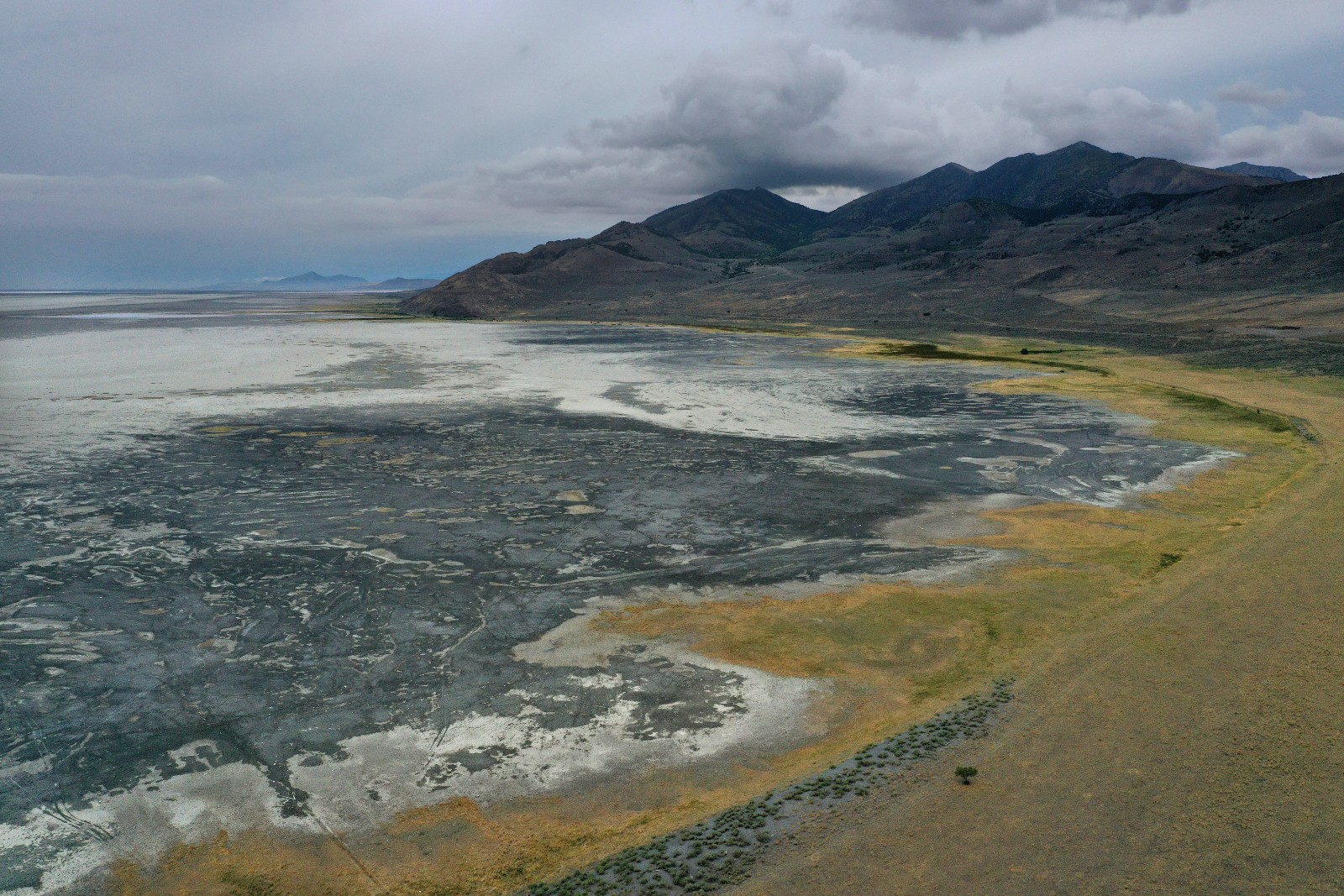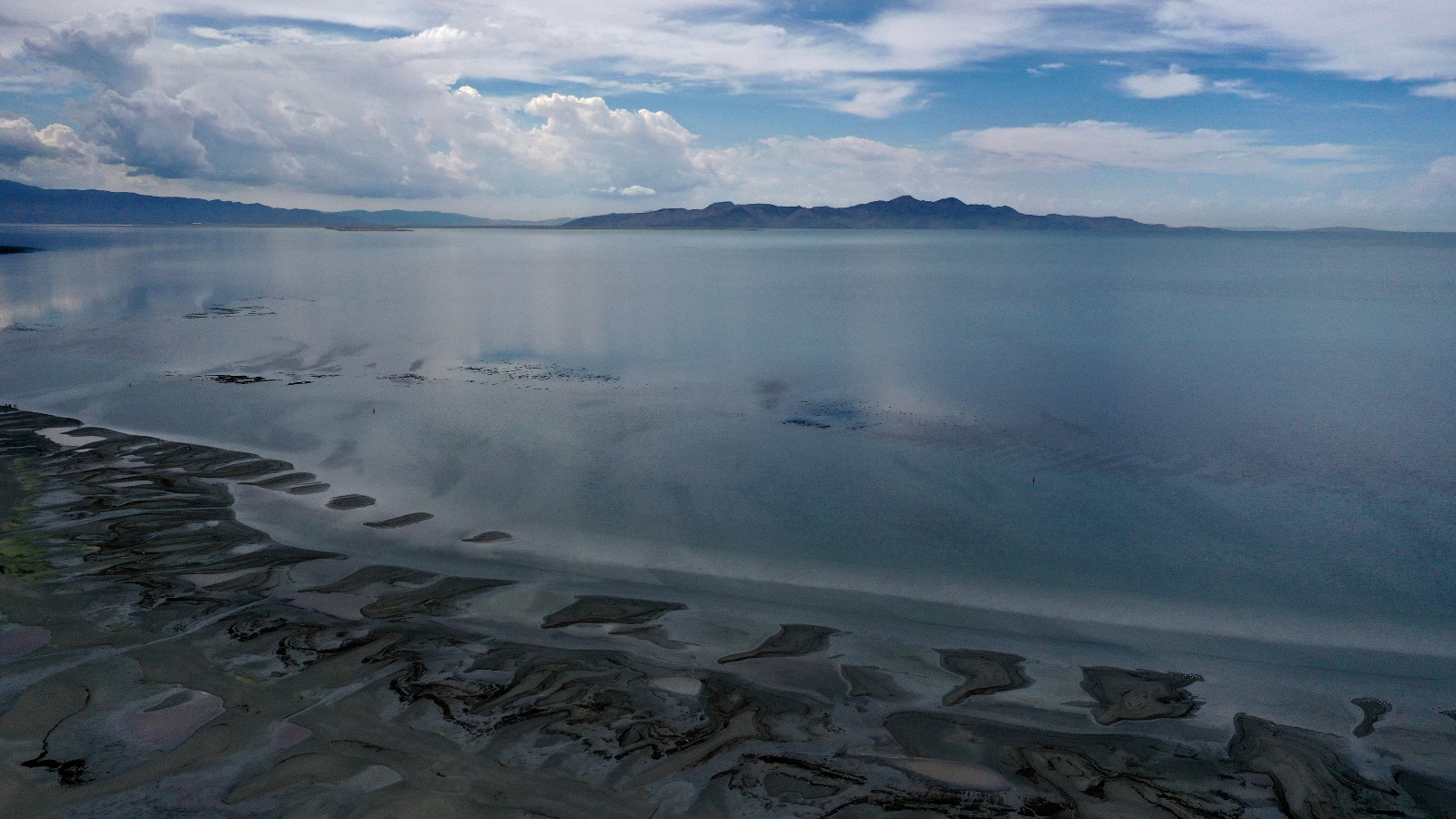The Great Salt Lake, home to millions of migratory birds and the source of $2.5 billion in annual economic activity in Utah, has been rapidly shrinking for years. A new lawsuit filed by conservation groups on Wednesday says the Utah government directly contributed to the lake’s decline by authorizing excessive diversions of water for agriculture, industry, and other uses.
The lawsuit hinges on the public trust doctrine, a legal principle that says states shoulder the responsibility to protect public resources like shared waters and lands. The plaintiffs have asked a district court in Utah to declare the state’s actions a violation of that public trust duty and to direct officials to restore the lake to healthy water levels. Without immediate action, they warn, heavy metals and sediments from the drying lakebed will blow downwind and into the lungs of Utah residents, turning the lake into a “toxic dust bowl.”
“Wherever you have an environmental nightmare, if you look hard enough or wait long enough, you’re going to have a public health nightmare,” Brian Moench, president of Utah Physicians for a Healthy Environment, one of the plaintiff groups in the case, told Grist. “And that’s exactly what we fear.”
The lake relies on upstream water flowing from several rivers and streams to maintain its water levels. But out of the approximately 3 million acre-feet of water that would normally flow into the lake each year, more than 2 million acre-feet are diverted for various purposes. Around three-quarters of that water is used for irrigating alfalfa and other crops. The industrial extraction of minerals, including salt, directly from the lake accounts for another 9 percent. Other industries and cities use another 9 percent, with 90 percent of citybound water destined to water lawns and other decorative outdoor plants. Meanwhile, climate change has increased evaporation and worsened drought in the Southwest, accounting for about 10 percent of the lake’s overall decline.
Researchers warned earlier this year that the Great Salt Lake may completely disappear in five years if water loss continues at current rates. As of last year, the Great Salt Lake had lost 73 percent of its water and 60 percent of its surface area compared to baseline historical levels.

Moench and other health advocates worry that without intervention, the Great Salt Lake will end up like the Aral Sea, located between Kazakhstan and Uzbekistan. Once the fourth largest lake in the world, today it is now almost completely dried up after decades of water diversions for agriculture. Toxic dust and water pollution, along with declining economic conditions, led to a significant rise in respiratory illnesses, cancer, and other chronic diseases in the region. According to a 2003 study, overall life expectancy for nearby residents dropped 13 years as the lake shrank.
In Utah, the drying lakebed has already led to deadly dust storms in the region. While in the short term, dusty air may only lead to itchy eyes, a cough, and difficulty breathing, Moench says that long-term exposure to air pollution raises the risk of many leading causes of death, including heart disease, lung disease, strokes, and cancer. Sediment from a dried up Great Salt Lake also contain pollutants like arsenic, mercury, lead, and nickel — potent neurotoxins that can impair brain function and development and cause cancer.
In addition to the public health risks, a depleted lake would also harm the Utah economy and environment. The Great Salt Lake supports brine shrimp fishing, recreation, and other industries. The ecosystem sustains around 9,000 local jobs and even boosts Utah’s skiing businesses by increasing annual snowfall through its evaporation.
Scientists and even Utah state officials say that for the Great Salt Lake to return to sustainable water levels, the government would need to reduce the amount of upstream water allocated toward agriculture, mineral extraction, and other activities. But the plaintiffs say the state’s Department of Natural Resources, Division of Water Rights, and Division of Forestry, Fire, and State Lands have been reluctant to adopt any strategy that limits existing uses of water. Utah leaders have also failed to include tribal nations in formal discussions about protecting the Great Salt Lake, even though Indigenous peoples including the Ute, Shoshone, and Paiute nations have lived near and managed the lake for thousands of years.
Stu Gillespie, an attorney at Earthjustice and lead counsel for the lawsuit, told Grist that as climate change and human activities continue to deplete water resources, state governments will be held increasingly accountable for their responsibility to protect public waters like the Great Salt Lake. Reminding them of their obligations under the public trust doctrine, he said, could be a viable way to get state governments like Utah’s to finally act.
“The public trust is being increasingly called upon to address this crisis, and it’s up to the courts to enforce it,” said Gillespie.




